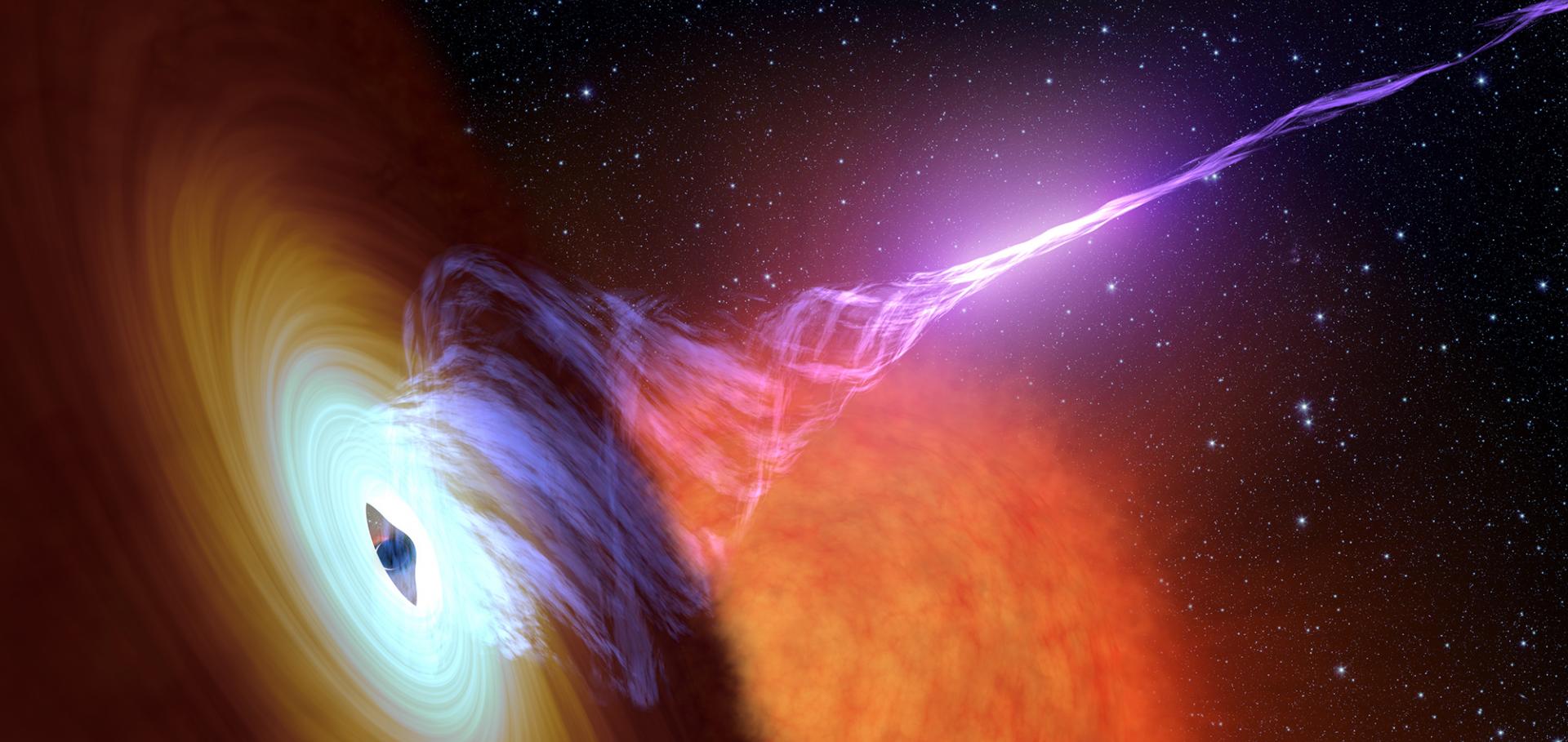A Multi-wavelength Characterization of the 2023 Outburst of MAXI J1807+132: Manifestations of Disk Instability and Jet Emission
(2025)
A Persistent Disk Wind and Variable Jet Outflow in the Neutron-star Low-mass X-Ray Binary GX 13+1
The Astrophysical Journal American Astronomical Society 986:1 (2025) 41
Abstract:
In low-mass X-ray binaries (LMXBs), accretion flows are often associated with either jet outflows or disk winds. Studies of LMXBs with luminosities up to roughly 20% of the Eddington limit indicate that these outflows generally do not co-occur, suggesting that disk winds might inhibit jets. However, previous observations of LMXBs accreting near or above the Eddington limit show that jets and winds can potentially coexist. To investigate this phenomenon, we carried out a comprehensive multiwavelength campaign (using the Very Large Array (VLA), Chandra/High Energy Transmission Grating Spectrometer (HETG), and NICER) on the near-Eddington neutron-star Z-source LMXB GX 13+1. NICER and Chandra/HETG observations tracked GX 13+1 across the entire Z track during high Eddington rates, detecting substantial resonance absorption features originating from the accretion disk wind in all X-ray spectra, which implies a persistent wind presence. Simultaneous VLA observations captured a variable radio jet, with radio emission notably strong during all flaring branch observations—contrary to typical behavior in Z sources—and weaker when the source was on the normal branch. Interestingly, no clear correlation was found between the radio emission and the wind features. Analysis of VLA radio light curves and simultaneous Chandra/HETG spectra demonstrates that an ionized disk wind and jet outflow can indeed coexist in GX 13+1, suggesting that their launching mechanisms are not necessarily linked in this system.Gone with the Wind: JWST-MIRI Unveils a Strong Outflow from the Quiescent Stellar-Mass Black Hole A0620-00
(2025)
Relativistic ejecta from stellar mass black holes: insights from simulations and synthetic radio images
Monthly Notices of the Royal Astronomical Society Oxford University Press 540:1 (2025) 1084-1106
Abstract:
We present numerical simulations of discrete relativistic ejecta from an X-ray binary (XRB) with initial conditions directly informed by observations. XRBs have been observed to launch powerful discrete plasma ejecta during state transitions, which can propagate up to parsec distances. Understanding these ejection events unveils new understanding of jet-launching, jet power, and jet–interstellar medium (ISM) interaction among other implications. Multifrequency quasi-simultaneous radio observations of ejecta from the black hole XRB MAXI J1820+070 produced both size and calorimetry constraints, which we use as initial conditions of a relativistic hydrodynamic simulation. We qualitatively reproduce the observed deceleration of the ejecta in a homogeneous ISM. Our simulations demonstrate that the ejecta must be denser than the ISM, the ISM be significantly low density, and the launch be extremely powerful, in order to propagate to the observed distances. The blob propagates and clears out a high-pressure low-density cavity in its wake, providing an explanation for this pre-existing low-density environment, as well as ‘bubble-like’ environments in the vicinity of XRBs inferred from other studies. As the blob decelerates, we observe the onset of instabilities and a long-lived reverse shock – these mechanisms convert kinetic to internal energy in the blob, responsible for in situ particle acceleration. We transform the outputs of our simulation into pseudo-radio images, incorporating the coverage of the MeerKAT and e-MERLIN telescopes from the original observations with real-sky background. Through this, we maximize the interpretability of the results and provide direct comparison to current data, as well as provide prediction capabilities.MeerKAT discovery of a hyperactive repeating fast radio burst source
Monthly Notices of the Royal Astronomical Society Oxford University Press 540:2 (2025) 1685-1700


